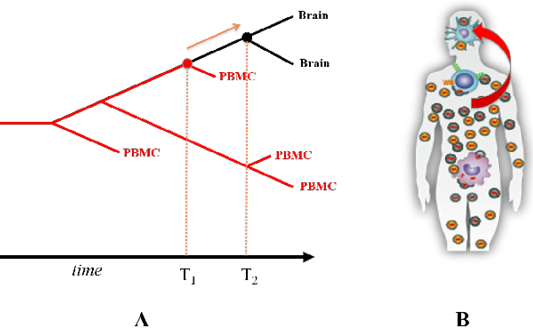

In addition, when progressive cellular dysfunction leads to cell death, early intervention is warranted. Early treatment would have the benefit of preventing secondary manifestation of the disease. Directing a gene therapy vector to the primarily affected systems can be influenced by route of delivery however, with the advent of systemic vector delivery, tissue restricted expression is mostly achieved through promoter selection. Of course, even achieving the heterozygous level of gene expression should have a therapeutic effect in Pompe disease since carriers are entirely asymptomatic. Gene replacement strategies are best suited to single gene defects where augmentation of expression or complete restoration of wild type activity levels is required to impact the clinical phenotype. Keywords: Pompe disease neuropathology gene therapy Given the advent of newborn screening, a significant focus of our recent work has been to establish the basis for repeat administration of AAV vectors to enhance neuromuscular therapeutic efficacy over the life span. This review focuses on the preclinical studies and clinical study findings which are pertinent to the development of a comprehensive gene therapy strategy for both IOPD and LOPD. Since the neurological manifestations of the disease are not amenable to peripheral enzyme replacement, we set out to better understand the pathophysiology and potential for treatment of disease manifestations using adeno-associated virus (AAV)-mediated gene transfer, with the first clinical gene therapy studies initiated by our group in 2006. In the current era of ERT clinical outcomes are improved, yet, many patients have an incomplete response and a substantial unmet need remains. In IOPD the untreated natural history leads to cardiorespiratory failure and death in the first year of life. In both circumstances, multi-system disease (principally motoneuron and myopathy) leads to progressive weakness with associated respiratory and feeding difficulty. Glycogen accumulation in the CNS and skeletal muscle is observed in both IOPD and LOPD. A milder form with late onset (LOPD) of symptoms is mostly free of cardiac involvement with slower rate of progression. Infants are described at floppy babies with cardiac hypertrophy in the first few months of life.

The most severe form of early onset disease is typically identified with symptoms in the first year of life, known as infantile-onset Pompe disease (IOPD). In the decade since availability of first-generation enzyme replacement therapy (ERT) a better understanding of the clinical spectrum of disease has emerged. Abstract: Pompe disease is a neuromuscular disease caused by a deficiency of the lysosomal enzyme acid alpha-glucosidase leading to lysosomal and cytoplasmic glycogen accumulation in neurons and striated muscle.


 0 kommentar(er)
0 kommentar(er)
